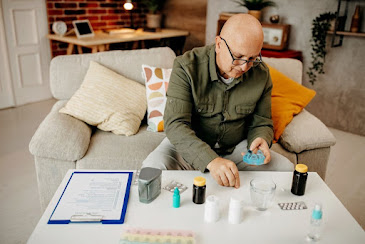EXERCISE
Physical activity is another important part of
your diabetes management plan. When you exercise, your muscles use sugar (glucose)
for energy. Regular physical activity also helps your body use insulin more
efficiently.
These factors work together to lower your
blood sugar level. The more strenuous your workout, the longer the effect
lasts. But even light activities — such as housework, gardening or being on
your feet for extended periods — can improve your blood sugar.
What to do:
- Talk to your doctor about an exercise plan. Ask your doctor about what type of exercise is appropriate for you. In general, most adults should get at least 150 minutes a week of moderate aerobic activity. Aim for about 30 minutes of moderate aerobic activity a day on most days of the week.
- Keep an exercise schedule. Talk to your doctor about the best time of day for you to exercise so that your workout routine is coordinated with your meal and medication schedules.
- Know your numbers. Talk to your doctor about what blood sugar levels are appropriate for you before you begin exercise se.
- Check your blood sugar level. Check your blood sugar level before, during, and after exercise, especially if you take insulin or medications that lower blood sugar. Exercise can lower your blood sugar levels even up to a day later, especially if the activity is new to you, or if you're exercising at a more intense level.
- Stay hydrated. Drink plenty of water or other fluids while exercising because dehydration can affect blood sugar levels.
- Be prepared. Always have a small snack or glucose tablet with you during exercise in case your blood sugar level drops too low. Wear a medical identification bracelet.
- Adjust your diabetes treatment plan as needed. If you take insulin, you may need to reduce your insulin dose before exercising and monitor your blood sugar closely for several hours after intense activity as sometimes delayed hypoglycemia can occur.




Comments
Post a Comment